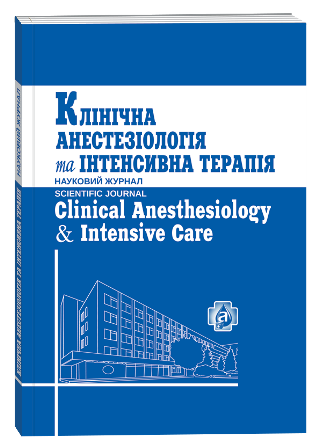EVALUATION OF THE INITIAL STATE OF THE HEMOSTASIS SYSTEM IN PATIENTS WITH ENDOMETRIAL CANCER
DOI:
https://doi.org/10.31379/2411.2616.12.2.8Keywords:
endometrial cancer, thrombus formation, hemostasisAbstract
Relevance. Haemostatic potential in cancer patients is characterized by pronounced functional changes in almost all links in the system of hemostasis and fibrinolysis. Violations of the functional state of the hemostasis system that develop in oncopathology, are implemented in thrombohemorrhagic and thromboembolic complications and play a significant role in the course and outcome of the disease. The above changes indicate the development of chronic disymed intravascular coagulation in cancer patients. Objective of the study. The purpose of this study is to evaluate the initial state of the hemostasis system in patients with endometrial cancer, the study of the functional state of vascular-platelet, coagulation units, and fibrinolysis of the hemostasis system and their disorders using low-frequency vibration piezoelectric thromboelastography (NPTEG). Materials and methods. The initial state of the vascular-platelet, coagulation and fibrinolysis of the hemostasis system, the hemostasis system was studied in 87 patients undergoing treatment for endometrial cancer in the department of surgery of the Center for Reconstructive and Rehabilitation of the Medical Center “ONMedU” for the period 2016–2018 for scheduled surgical intervention. Results. The results of the studies represent a group of endometrial cancer patients as a model in which are pronounced disorders of the aggregate state of the blood, where hypercoagulation dominates the anticoagulant potential. Inadequately enhanced activation of one or both coagulation units, even with the normal functioning of the anticoagulant system, can lead to generalized thrombus formation. Therefore, it is necessary to take into account the prevalence of thrombogenesis processes over fibrinolysis processes in this patient population and to consider the activation of platelet aggregation as an additional factor that participates in providing mechanisms for hypercoagulability.
References
Clinicopathological analysis of endometrial carcinomas harboring somatic POLE exonuclease domain mutations / Y. R. Hussein et al. Mod Pathol. 2015. Vol. 28, № 4. P. 505–514.
Clinical analysis of endometrial cancer patients with obesity, diabetes, and hypertension / X. H. Yin et al. Int J Clin Exp Med. 2014. Vol. 7, № 3. P. 736–743.
The prothrombotic activity of cancer cells in the circulation / A. Mitrugno et al. Blood Rev. 2016. Vol. 30, № 1. P. 11–19. doi: 0.1016/j.blre.2015.07.001.
Cancer-related coagulopathy (Trousseau’s syndrome): review of the literature and experience of a singlecenter of internal medicine / F. Dammacco et al. Clin. Exp. Med. 2013. № 13. P. 85–97.
Can we use the low-frequency piezoelectric tromboelastography for diagnosis coagulation disorders? / O. Tarabrin et al. European Journal of Anaesthesiology. 2013. № 30. P. 92.







